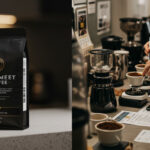
How is Traditional Coffee Defined in the U.S.? A Timeless Brew
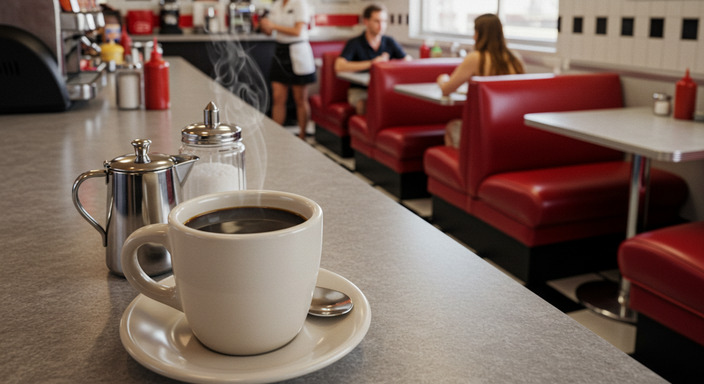
Table of Contents
ToggleThe Essence of Traditional Coffee
What Makes Coffee “Traditional” in the U.S.
In the United States, traditional coffee is more than just a beverage—it’s a cultural staple that has woven itself into the fabric of daily life. Traditional coffee is often defined by its simplicity, consistency, and accessibility. It’s the kind of coffee you might find in a diner, brewed in a classic drip machine, or percolated in a stovetop pot. It’s unfussy, reliable, and always there to greet you in the morning or offer comfort during a break.
This type of coffee is often associated with medium roasts, balanced flavors, and a strength that wakes you up without overwhelming your palate. It’s the coffee your grandparents might have sipped while reading the newspaper or the cup you grab on your way to work. It’s not about trends or elaborate preparations—it’s about the timeless ritual of brewing and enjoying a cup that feels like home.
The Simplicity of Classic Brewing Methods
Traditional coffee is inseparable from the methods used to brew it. In the U.S., drip coffee makers have long been the go-to appliance, turning ground beans into a steaming pot of coffee with minimal effort. The process is straightforward: water filters through coffee grounds, extracting the rich flavors and aromas that define a classic cup. Similarly, percolators, though less common today, evoke a sense of nostalgia with their bubbling rhythms and robust brews.
These methods prioritize ease and consistency, making them accessible to everyone. Whether it’s the hiss of a diner’s coffee machine or the familiar hum of your own kitchen brewer, the simplicity of these techniques ensures that traditional coffee remains a dependable part of everyday life.
The Role of Nostalgia in Defining Traditional Coffee
Nostalgia plays a significant role in how we perceive and cherish traditional coffee. For many, the first sip of a familiar brew can transport them back to cherished memories—early mornings with family, conversations at a local café, or quiet moments of reflection. Traditional coffee often carries with it a sense of comfort and continuity, linking generations through shared rituals and tastes.
It’s not just about the flavor; it’s about the experience—the clink of a cup on a saucer, the warmth in your hands, the aroma that fills the room. These sensory cues create a connection to the past, making traditional coffee more than just a drink. It becomes a symbol of home, community, and tradition, deeply rooted in American culture.
A Brief History of Coffee in America
Early Coffee Traditions and Cultural Influences
When coffee first arrived in America during the colonial era, it quickly became a symbol of revolution and independence. The Boston Tea Party of 1773 famously shifted the nation’s preference from tea to coffee, solidifying its place in American culture. Early coffee traditions were simple yet profound—brewed in pots over open flames and shared among families and communities. This humble beverage was deeply influenced by European immigrants who brought their own brewing methods and rituals, blending them into the fabric of American life.
The Rise of Diner Coffee and Its Enduring Legacy
By the early 20th century, coffee had become a staple of American daily routines, and nowhere was this more evident than in the rise of diner coffee. Diners, with their chrome counters and vinyl booths, became sanctuaries for coffee lovers. The diner-style drip coffee, strong, unfiltered, and served in thick mugs, became an iconic symbol of comfort and camaraderie. It was a place where truckers, students, and families alike gathered, forging connections over steaming cups of java. This legacy endures today, with diner coffee still evoking a sense of nostalgia and simplicity.
How Traditional Coffee Shaped American Daily Life
Traditional coffee has long been woven into the rhythm of American life. From the first light of dawn, it has been a trusted companion, fueling productivity and offering a moment of respite. Whether enjoyed at the kitchen table, in the office, or on the go, coffee has become more than just a beverage—it’s a ritual. Its presence in households across the nation has shaped morning routines, afternoon breaks, and late-night conversations, proving that its appeal is as timeless as it is universal.
The Ingredients of a Classic Cup
The Importance of Quality Beans and Water
At the heart of every great cup of coffee lies two essential ingredients: quality beans and pure water. The beans, often sourced from regions like Colombia, Ethiopia, or Brazil, carry the essence of their terroir—each sip a testament to the soil, climate, and care that nurtured them. Whether you prefer a bold dark roast or a smooth medium blend, the choice of beans sets the stage for the entire experience. Equally important is the water, which should be clean and free of impurities. After all, coffee is 98% water, and its quality can elevate or diminish the final brew.
Traditional Brewing Tools: Percolators, Drip Machines, and More
Traditional coffee brewing is as much about the process as it is about the result. Tools like percolators and drip machines have stood the test of time, each offering a unique way to extract flavor. The percolator, with its rhythmic bubbling, evokes memories of early mornings in cozy kitchens. Meanwhile, the drip machine, a staple in homes and diners alike, delivers consistency and convenience. Other methods, such as the French press or pour-over, also hold a special place in the hearts of coffee enthusiasts. Each tool brings its own charm, inviting us to slow down and savor the ritual.
The Timeless Appeal of Black Coffee
There’s something undeniably pure about a cup of black coffee. Stripped of additives, it allows the true character of the beans to shine. For many, it’s a daily ritual—a moment of quiet reflection before the day begins. Black coffee has a way of connecting us to tradition, whether it’s the strong, unfiltered brew of a cowboy campfire or the smooth, aromatic cup served in a bustling city café. Its simplicity is its strength, a reminder that sometimes, the best things in life are unadorned.
Traditional Coffee in Modern Times
Adapting to Modern Tastes
In a world of ever-evolving coffee trends, traditional coffee has found its place by adapting without losing its essence. While specialty drinks and artisanal brews dominate café menus, the simplicity of a classic cup of coffee remains unmatched. Many coffee lovers have embraced traditional methods like drip brewing or French press, appreciating the unpretentious, comforting flavors they deliver. Even modern coffee shops often feature a “classic brew” option, proving that traditional coffee can coexist with contemporary tastes.
The Resurgence of Classic Brewing Methods
In recent years, there has been a notable resurgence of classic brewing techniques. Methods like pour-over, percolation, and even stovetop espresso makers have gained popularity among coffee enthusiasts. This revival isn’t just about nostalgia—it’s about the ritual and craftsmanship that come with these time-honored practices. For many, the act of brewing coffee the traditional way is a moment of mindfulness, a break from the fast-paced modern world.
- Pour-over coffee: Celebrated for its clean, nuanced flavors.
- French press: Loved for its rich, full-bodied texture.
- Percolators: A nod to the past, offering a robust and hearty brew.
Why Traditional Coffee Remains a Staple
Traditional coffee continues to hold a special place in American homes because it’s more than just a drink—it’s a cultural touchstone. From the first sip of a morning brew to the shared pot at family gatherings, coffee is woven into the fabric of daily life. Its affordability, accessibility, and versatility make it a reliable choice for people of all ages. As one coffee lover put it,
“Traditional coffee is like a warm hug in a mug—it’s familiar, comforting, and always there when you need it.”
Moreover, traditional coffee connects us to our roots. Whether it’s a recipe passed down through generations or the way it’s served in a favorite diner, it carries a sense of history and continuity. In a world that’s constantly changing, traditional coffee offers a comforting constant.
The Cultural Significance of Traditional Coffee
Coffee as a Social and Communal Experience
Traditional coffee has long been a cornerstone of social interaction in the United States. Whether it’s gathering around the kitchen table with family or meeting friends at a local diner, coffee serves as a catalyst for connection. The shared experience of sipping a warm cup fosters conversation, builds relationships, and creates cherished memories. From early morning catch-ups to late-night heart-to-hearts, coffee is more than a beverage—it’s a ritual that brings people together.
The Role of Coffee in American Pop Culture
Traditional coffee has woven itself into the fabric of American pop culture, appearing in films, television shows, and literature as a symbol of everyday life. Think of the iconic diner scenes in classic movies or the cozy coffee shops in modern TV series. Coffee has become a cultural shorthand for comfort, routine, and familiarity. Songs like “You’re So Vain” by Carly Simon even immortalize the humble cup of coffee, proving its enduring presence in the arts.
How Traditional Coffee Connects Generations
One of the most beautiful aspects of traditional coffee is its ability to bridge generations. Grandparents share stories over a pot of freshly brewed coffee, while parents pass down their favorite brewing methods to their children. This timeless beverage becomes a thread that ties past and present, preserving traditions and creating new ones. Whether it’s a family recipe or a shared moment at the breakfast table, coffee fosters a sense of continuity and belonging that transcends time.
How to Brew Traditional Coffee at Home
Step-by-Step Guide to Making a Classic Cup
Brewing traditional coffee at home is an art that connects us to generations of coffee lovers. Here’s how to craft a perfect cup:
- Measure your coffee: Use 1 to 2 tablespoons of ground coffee for every 6 ounces of water, depending on your preferred strength.
- Heat the water: Bring fresh, cold water to just below boiling (195°F to 205°F). Too hot, and you’ll scorch the beans; too cool, and the flavors won’t fully extract.
- Brew: Pour the hot water over the grounds in a drip coffee maker, French press, or pour-over setup. Let it steep or drip for 4 to 5 minutes.
- Serve immediately: Pour into your favorite mug and enjoy the rich, comforting aroma.
Tips for Choosing the Right Beans and Equipment
The foundation of great coffee lies in the beans and the tools you use. Here’s how to make the best choices:
- Beans: Opt for freshly roasted, high-quality Arabica beans. Look for a roast date on the package and choose medium or dark roast for that classic, robust flavor.
- Grind: Grind your beans just before brewing for maximum freshness. A medium grind works well for most traditional brewing methods.
- Equipment: Invest in a reliable drip coffee maker, French press, or pour-over setup. Even a simple stovetop percolator can deliver that nostalgic diner-style brew.
How to Recreate the Diner Coffee Experience
There’s something magical about the coffee served in classic American diners—strong, smooth, and endlessly comforting. Here’s how to bring that experience home:
- Use a blend: Diner coffee often uses a blend of medium and dark roasts for a balanced flavor. Experiment with your own mix to find the perfect combination.
- Keep it hot: Diners serve coffee piping hot. Use a thermal carafe or preheat your mug to maintain the temperature.
- Serve it simple: Offer classic accompaniments like cream, sugar, and a slice of pie or toast to complete the experience.
Celebrating the Timeless Appeal of Traditional Coffee
There’s something undeniably comforting about a cup of traditional coffee—one sip can transport you back to quiet mornings, cherished conversations, or generations-old brewing rituals. Even in a world of elaborate espresso creations and flashy trends, the simplicity of a well-made cup of coffee remains unparalleled. This enduring love affair isn’t just about caffeine; it’s about connection, tradition, and the quiet joy found in life’s familiar moments.
Why Traditional Coffee Still Resonates
Time may pass, trends may fade, but the appeal of traditional coffee endures. Here’s why:
- Nostalgia in Every Sip: A dark roast or a diner-style brew can evoke childhood memories, family gatherings, or the comforting hum of a neighborhood café.
- Simplicity Wins: No fancy equipment or complicated steps—just quality beans, water, and careful brewing.
- Cultural Threads: Whether it’s immigrant traditions, Southern sweet coffee, or cowboy-style campfire brews, these methods tell stories.
“Coffee is a language in itself.” — Jackie Chan
The Joy of a Simple, Well-Brewed Cup
In a world that glorifies hustle, traditional coffee invites us to slow down. The ritual of grinding beans, waiting for the drip, or savoring the first steamy sip is a meditation. It’s not just about how it’s made, but how it makes us feel—a moment of calm, a burst of energy, or the warmth of shared stories across the table.
Keeping Traditions Alive
Preserving traditional coffee isn’t about resisting change—it’s about honoring roots. Here’s how to keep these customs thriving:
- Teach the Next Generation: Pass down family recipes or brewing methods, whether it’s a stovetop percolator or a French press.
- Support Local: Visit diners, mom-and-pop shops, and roasters who still champion time-tested techniques.
- Make It Meaningful: Celebrate coffee’s role in holidays, morning routines, or community gatherings.
Q&A: Honoring Coffee Traditions
Can traditional coffee still compete with specialty trends? Absolutely. Trends come and go, but the demand for honest, well-crafted coffee is timeless. Many drinkers return to basics after chasing novelty. What’s the best way to start appreciating traditional coffee? Begin with freshly ground beans, try different classic methods (like a pour-over or moka pot), and pay attention to flavor notes—no milk or sugar needed.
Traditional coffee isn’t just a drink; it’s a testament to patience, craftsmanship, and shared humanity. So here’s to the next cup—steeped in history, poured with love, and enjoyed just the way it was meant to be.
is an editor at Coffee With Finance and a true coffee enthusiast. He explores roasts, flavors, origins, and brewing methods, sharing stories that captivate both beginners and experts. Petter believes great coffee sparks meaningful moments—and that includes simple, jargon-free talks about personal finance. His content blends aroma, flavor, and insight, making each coffee break an inspiring and enriching experience.

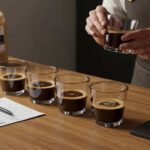
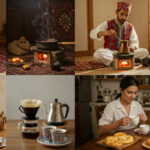





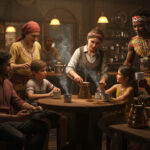

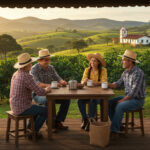


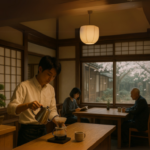




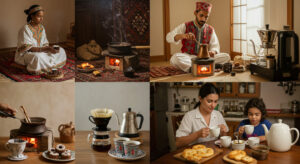



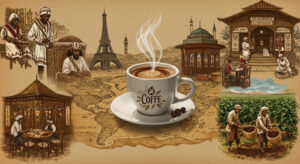

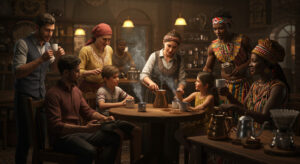
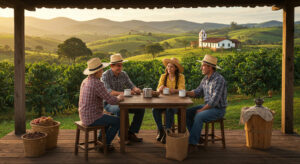

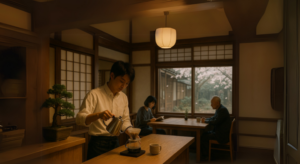
Post Comment